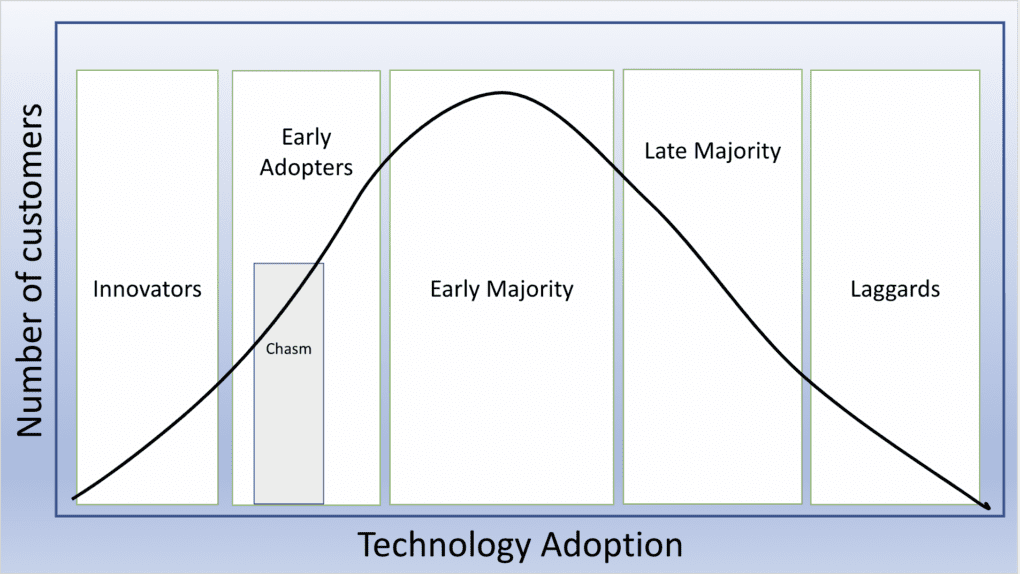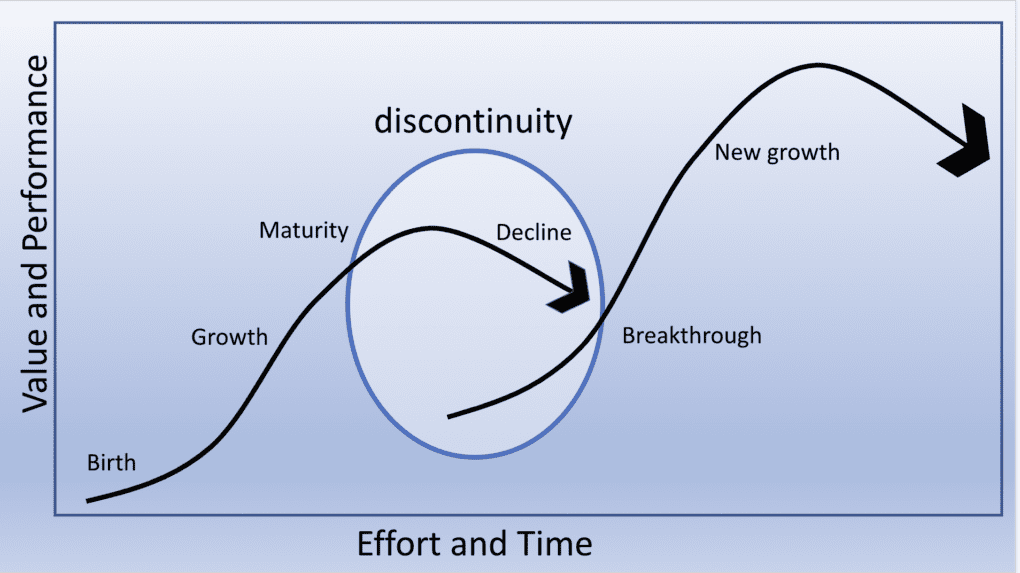
How should learning and development professionals use these new opportunities to enhance in-person, online and hybrid learning without trapping ourselves in technology-centric approaches?
by William A. Sodeman
December 14, 2022
More digital natives enter the workforce every day. The young adults of this decade have spent their entire lives using digital technologies, and have a very different educational experience than any previous generation — no matter if this experience is in K-12, college or vocational training. Senior leaders and middle managers face growing challenges as these diverse new generations of employees onboard to new and existing job roles.
How should learning and development professionals use these new opportunities to enhance in-person, online and hybrid learning without trapping ourselves in technology-centric approaches? Frameworks such as the technology and the innovation lifecycle can help us prepare future-ready workforces.
Executives and middle managers, especially those from Generation X (born 1965-1980) and millennials (born 1981-1996) are more accustomed to traditional instructor-led learning in classrooms. The youngest members of Generation Y are now in their late 50s, and the oldest millennials are now in their early 40s. Younger generations such as Generation Z (born 1997 to 2012) value on-demand knowledge through searches that are guided by large online databases that are constantly updated and refreshed.
Learning knowledge and facts are less important than knowing how to find this information. Simply learning because an authority says it is relevant or important may not resonate. Generation Y and millennial managers and employees were instrumental during the personal computer epoch and when we moved into the age of the Internet, and may now feel nervous or frustrated as they work with younger employees who prefer video and search to traditional forms of learning.
The pandemic forced students and parents to adapt to the virtual classroom, which has long-term implications for L&D professionals. This generation has been referred to as a “lost generation” because of the many societal changes they have faced.
Leading authorities such as McKinsey and Company recommend 100 days per year of active learning as a highly effective means of employee and executive development. Carving out time for this can be challenging as the pace of technological and societal change — including the wide-scale adoption of both social media and the gig economy — makes it more difficult to devote long periods to formal learning. It is easier to commit to smaller chunks of informal learning, which Generation Z is more adept at than earlier generations.
To better understand these changes, we should examine two well-known models of technological change: The technology adoption lifecycle, and the innovation lifecycle.
The technology adoption lifecycle
The technology adoption lifecycle is an S-curve with a sequence of research and development, ascent, maturity and decline. Depending upon the technology, each stage may take varying times to start and complete.The lifecycle features early adopters who transform into early and late majorities, followed by laggards who are late in adopting the technology.
Some technologies never make it across the so-called chasm in the early adopter phase, especially when a technology fails to find successful applications in the marketplace. There were electric automobiles in the early 20th century, but fossil-fuel powered vehicles rapidly gained acceptance and wide-scale adoption of electrics did not occur until the last 10 years.

The average technology adoption lifecycle has become much faster in the 21st century. Home electricity service took almost 50 years to reach widespread adoption by North American consumers, even with government projects and subsidies that sped up this timeline. Color television took over 30 years, and early adopters paid more for color TVs when compared to late adopters. The Internet took less than 20 years to reach widespread adoption, and the smartphone took less than 10 years.
Common assumptions about technology usage can wither quickly. The keyboard and mouse have been the dominant input devices for personal computer users since the 1990s. The modern desktop computer experience is dominated by these technologies. Young adults are far more familiar with touch screen technologies used in tablets and smartphones. Voice assistants such as Siri, Alexa and Google Assistance can be much easier to use than traditional keyboard computers. These technologies are based on search engines they are based upon that can learn about individual users. The voice interface is shifting from command-and-response for simple tasks such as messaging and scheduling to conversations about a range of topics.
The innovation lifecycle
The innovation lifecycle can be either an S-curve or a series of successive curves depending on whether the innovation in question becomes less popular or is further refined. For example, large public lectures have gradually become smaller formal classroom experiences. During the pandemic, both of these in-person experiences reemerged as virtual meetings and webinars of various sizes.
On the other hand, the manual typewriter also evolved into the electric typewriter, then changed into the dedicated word processor and then eventually emerged as the keyboard-driven personal computer. Sometimes, an innovation takes several decades to gain traction, as we saw with electric automobiles.

We can apply the innovation lifecycle to learning for both Gen X and Millennials. These generations are more comfortable with static file formats such as PowerPoints and PDF files. These snapshots of formal thought are like a museum or college that grows and changes slowly. Prescribed learning paths and degree programs were dominant frameworks for these generations of learners. Gen Z prefers dynamic models that have some similarities to the desired paths that people trace between destinations instead of following defined trails and cement sidewalks.
In the modern, cloud-based world of work and learning, collaboration in real-time is valued and expected. Badges and microcredentials offer quicker returns on time invested in formal and informal learning. Artificial intelligence can help support this dynamic world of learning by recognizing patterns of predictable behaviors quickly and providing meaningful content and experiences. Storytelling has made a comeback as another means of changing behavior and increasing learner engagement.
We should remember that no generation is a monolith, and that each generation has a lifespan. Baby boomers have by and large left the workforce. Generation Z will account for a third of the workforce within the next few years, and it is difficult to predict what roles they will fill in the workplace. SHRM predicts that 50 percent of jobs in 2030 do not exist yet.
Connecting generations through learning trends
It is helpful that both the technology adoption and innovation lifecycles feature learning and adoption paths that allow for varied levels of acceptance. For the largest use cases, this can automate and hasten how we address growing population segments within our teams. Every employee journey is different
To better bridge the generations, we could rely on building shared assumptions. For example, it is helpful for the generations to agree that learning is relevant. One school of management from the baby boomer generation, Theory Y, states that people want to work and improve themselves.
How should we bridge these generations who span diverse cultures of learning and technological experience? We can begin by examining three different trends: everboarding, digital transformation and reverse mentoring.
Everboarding is one way to span the generations. In contrast to onboarding, everboarding promotes continuous L&D that helps retain employees and prepares them for shifting careers.
We must recognize that the average employee’s tenure is shorter than ever, and that each individual person will have multiple careers during their life — and, perhaps simultaneously as more people take multiple jobs and gigs. Restaurants provide a ready example: Before the pandemic, consumers visited and ate at restaurants where the food was prepared. During the pandemic, this model abruptly changed to pick-up and delivery in such a widespread way that some restaurant chains now use ghost kitchens and seatless restaurants to prepare and provide food. This in turn has led to a shift in employee learning away from face-to-face customer service to a tighter focus on both process and quality control.
The digital transformation of organizations is not a new phenomenon, but it is accelerating as technology and innovation lifecycles both become faster. Organizations that attempt digital transformation make fundamental changes in their technology stacks and business processes to build effectiveness and enhance efficiency. The future of work already involves humans using AI. Remote workers have given rise to virtual workforces that scale when needed and can shift with demand for other roles.
Digitally transformed organizations provide new challenges to L&D professionals, as these organizations change quickly. Previous models of instructional design and knowledge delivery are giving way to more dynamic methods such as microlearning. Public-private partnerships can also help employers find, train and retain staff to support both the transformed organization and diversity, equity, inclusion and belonging efforts.
Reverse mentoring is another way that generations can build bridges across these divides. Younger employees provide advice and coaching for employees with longer tenures, particularly in the adoption and usage of technology and related processes. Multi-generational learning cohorts are helpful as they provide networks of support, both within instructor-led training and online learning. Most learning takes place outside a formal framework as employees work alone and with each other to master and apply concepts and skills. This form of mentoring also helps support DEIB initiatives.
These examples represent just a few of the possible learning and development approaches we can take to connect different generations of employees and managers in our organizations. Learning initiatives that focus on resilience, collaboration skills and clear communication can also help support these efforts.
Additionally, it is important to build and foster strong connections among learning and development groups and sources of organizational innovation. Organizations can achieve more by bringing generations of managers and employees together to support common goals and generational concerns.



